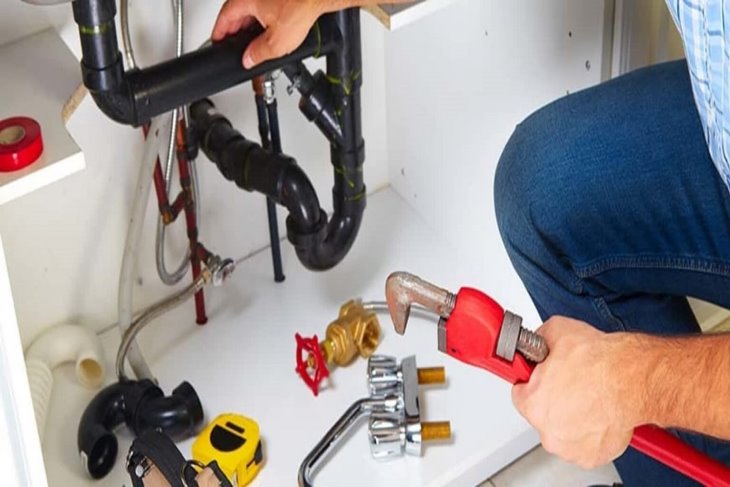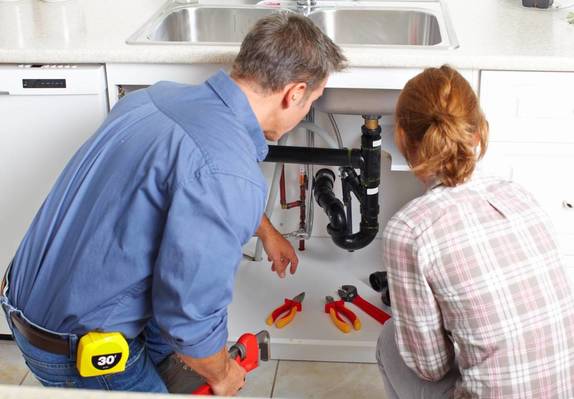Revealing the Next Chapter of Plumbing: Patterns and Advancements
Revealing the Next Chapter of Plumbing: Patterns and Advancements
Blog Article
The article author is making a number of good observations relating to 7 Plumbing Industry Trends You Need To Know in general in this content further down.

Introduction
The pipes industry is going through a transformative stage driven by technological advancements and growing worries for sustainability and performance. This article checks out emerging trends and advancements shaping the future of plumbing.
Smart Plumbing Equipments
Incorporating smart modern technology into pipes systems enables remote monitoring, leakage detection, and automated upkeep. Smart sensors and IoT (Internet of Points) gadgets permit house owners and plumbing technicians to check water usage and identify issues in real-time, leading to much more effective source administration and aggressive upkeep.
Water Efficiency Solutions
With increasing emphasis on water conservation, cutting-edge solutions are being developed to lessen water wastefulness in plumbing systems. High-efficiency components, greywater recycling systems, and wise watering controllers are among the modern technologies aiding customers reduce their water footprint while preserving convenience and convenience.
Lasting Materials
The shift in the direction of sustainability includes plumbing materials, with an expanding preference for green alternatives. Biodegradable piping materials, such as PEX (cross-linked polyethylene) and HDPE (high-density polyethylene), deal longevity and resistance to corrosion without compromising ecological honesty.
Predictive Maintenance
Predictive maintenance strategies take advantage of information analytics and artificial intelligence formulas to anticipate and protect against pipes concerns before they happen. By assessing historic data and efficiency metrics, anticipating upkeep algorithms can recognize patterns and anomalies, enabling aggressive interventions to stay clear of pricey repair services and disruptions.
Increased Reality in Pipes
Increased Reality (AR) innovation is transforming pipes by providing specialists with real-time aesthetic guidance for troubleshooting and repair service jobs. AR-enabled clever glasses or mobile applications overlay electronic info onto the physical environment, helping plumbing professionals envision pipeline designs, determine concealed leakages, and implement repairs with precision.
Influence of 3D Printing
The advent of 3D printing has actually presented brand-new possibilities in manufacturing plumbing parts. From custom-made components to complex pipeline fittings, 3D printing permits fast prototyping and on-demand production, reducing preparations and enabling higher personalization in plumbing design.
Health And Wellness Characteristics
In action to enhanced issues for health and wellness, pipes components are integrating functions such as antimicrobial surfaces, touchless operation, and self-cleaning systems. These innovations not just improve hygiene yet also promote customer convenience and ease.
Hygiene-focused Components
Touchless faucets, self-sanitizing toilets, and antimicrobial surfaces are ending up being progressively widespread in property and industrial setups, decreasing the risk of germ transmission and promoting a cleaner, healthier atmosphere.
Water Top Quality Surveillance
Innovations in water high quality tracking technologies make it possible for house owners to monitor the pureness and security of their supply of water in real-time. Smart water high quality sensing units can find pollutants, pH degrees, and temperature level variations, equipping users to take proactive measures to ensure water safety.
Remote Pipes Providers
Remote diagnostics and online help are reinventing the way plumbing solutions are supplied. Via video clip conferencing and remote gain access to modern technologies, plumbings can troubleshoot issues, offer guidance for DIY fixings, and also carry out remote assessments, offering greater availability and benefit to house owners.
Challenges and Opportunities
While plumbing innovations hold immense assurance, they likewise present challenges such as information privacy issues, governing conformity, and the demand for workforce training. Dealing with these challenges calls for collaboration between sector stakeholders and governing bodies to make certain safe and accountable application of brand-new innovations.
Regulative Landscape
Governing frameworks play a crucial function in shaping the fostering of plumbing innovations, with criteria and codes regulating everything from water efficiency to item safety and security. As innovations continue to progress, regulatory bodies should adapt to make certain consumer security and environmental stewardship.
Future Expectation
The future of pipes is identified by proceeded development and combination with various other markets such as IoT, renewable resource, and building automation. By welcoming sustainable practices, leveraging arising technologies, and prioritizing user-centric layout, the plumbing sector is poised to address the advancing demands of culture while minimizing its environmental footprint.
Final thought
To conclude, the future of plumbing is defined by a convergence of innovation, sustainability, and user-centric style. By embracing clever options, sustainable materials, and positive upkeep methods, the pipes sector can enhance efficiency, advertise security, and contribute to a much more lasting future.
Plumbing Industry Trends You Need To Know
Smart technology in plumbing
Homeowners want to be able to manage their homes from their phones. The technology exists to make that happen. From smart toilets to leak detector devices, the whole plumbing system can be managed on an interconnected network made up of sensors, IoT devices, and machine learning algorithms.
This allows for wireless control to turn appliances on and off, automate routines, and access advanced monitoring to track water usage and flag potential issues. Smart technology streamlines water consumption, maintenance and energy usage, creating a more efficient system.
Green plumbing
The data analysis possible with smart technology not only improves convenience and cost-effectiveness but also fulfills a high-priority customer desire – sustainability. Consumers are very aware of their impact on the planet and want plumbing solutions to reduce damage and support sustainability. Eco-friendly plumbing solutions are already starting to emerge.
Customers can opt for low-flow toilets, water-saving faucets, and connections to sustainable energy sources. Beyond monitoring water consumption, customers can conserve water through the installation of greywater systems. This is a system that collects water that has been used but is still clean enough for some household uses such as toilet flushing.
Shorter product pipeline
To keep up with modern plumbing, plumbers need modern tools that enable them to complete jobs more efficiently. One technology making strides in this area is 3D printing. By 3D printing key plumbing fixtures, plumbers can reduce wait times even for specialized fixtures. It minimizes delays often seen in traditional manufacturing that frustrate customers and prevent plumbers from taking on more work.
Off-site repairs
Augmented reality is making a splash in many industries including plumbing. Plumbers can map a building online so they can explore the plumbing system through augmented reality, identifying areas of maintenance and repair completely digitally. This technology can be applied quite widely in plumbers’ work including planning installations and training new recruits. It’s safer, smarter and more efficient.
Low-footprint materials
Another way for plumbing companies to reduce their environmental footprint and meet the customer demand for sustainability is by using recycled materials in their work. The products they source and manufacture such as pipes, fixtures and faucets can be made from recycled materials. This saves the planet while being just as effective.
Onsite water purification
Additionally, plumbing companies can be advocates of water conservation and ease the financial and environmental concerns of customers by offering water purification systems. New water purification technology such as reverse osmosis systems and UV systems make it possible for homeowners and business owners to thoroughly cleanse water, removing contaminants onsite. This means the water can be safely reused in more ways than greywater can be, establishing a water recycling loop.
Tankless water heaters
Another innovation of modern plumbing is tankless water heaters. The idea is that the water is heated on demand as it runs through the system instead of being heated in a water tank. This is more energy efficient and therefore cost-effective and eco-friendly because water isn’t heated needlessly.

Do you really like reading about The Future Of Plumbing: Trends And Technologies To Watch? Post feedback down the page. We will be happy to find out your thinking about this posting. We hope that you come back again in the near future. Do you know about another individual who is fascinated with the subject? Please feel free to promote it. I take joy in your readership.
Call Report this page